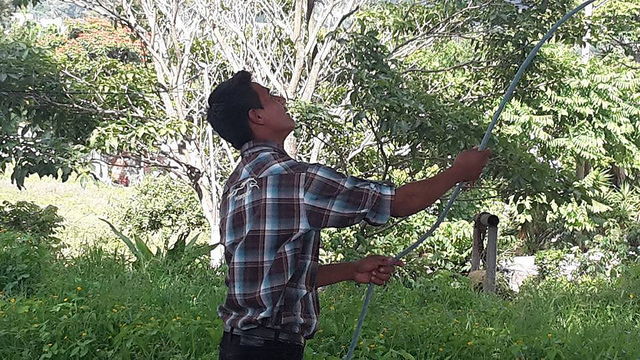"A walk in the park may soothe the mind and, in the process, change the workings of our brains in ways that improve our mental health..." (Reynolds, para.1, 2015.)
Keeping consistent with last week’s blog, we’d like to share another aspect of research that relates to the ideas embraced by Play For Peace as our activities are led outside whenever possible. Gretchen Reynolds recently wrote a blog for The New York Times: “How Walking in Nature Changes the Brain.” As an organization devoted to play, PFP encourages others to get in touch with the world around them. Let’s look at the research Reynolds shares for getting up, and getting outside. Reynolds focuses on the work of Stanford University graduate student Gregory Bratman. Bratman and his colleagues have been studying the effects of the natural world on our brain, and the research is pertinent to the modern city dweller: "City dwellers...have a higher risk for anxiety, depression and other mental illnesses than people living outside urban centers, studies show” (Reynolds, Para. 3, 2015).
In one study, Bratman and colleagues had volunteers take walks either in lush surroundings or in areas of heavy traffic. Of these, those who walked in the greener environment reported feeling more positive afterward (Reynolds, 2015). Bratman’s newer study looks at specific emotional tendencies, along with nature’s neurological effects on them. In this more comprehensive study, nature’s effect on brooding, otherwise known as morbid rumination, was examined. When we brood, we hold onto things, reviewing upsetting events over and over in our mind: aside from being unhealthy, the behavior is more common in city dwellers, can forerun depression, and is associated with increased activity in the brain’s subgenual prefrontal cortex (Reynolds, 2015). Alone and without music and at their own pace, volunteers engaged in a 90-minute stroll, having previously undergone brain scans and a questionnaire to determine their current emotional state. Some volunteers walked in beautiful, lush surroundings on the Standford campus, while others were situated on a less scenic path...near a multi-lane highway in Palo Alto (Reynolds, 2015). Participants then completed new scans and a new questionnaire. The results were encouraging! As Reynolds reported:
“Volunteers who had strolled along the quiet, tree-lined paths showed slight but meaningful improvements in their mental health, according to their scores on the questionnaire. They were not dwelling on the negative aspects of their lives as much as they had been before the walk...They also had less blood flow to the subgenual prefrontal cortex. That portion of their brains were quieter.” (Para. 17 - 18, 2015).
It isn’t clear exactly why this happens, but, as Bratman suggests, exploring the benefits of the outdoors--enjoying a simple walk, for example--is hardly harmful (Reynolds, 2015). We at Play for Peace were excited by the research: it sheds new light on yet another way that we, as individuals and communities, can maximize the time we spend both by ourselves and with others. When we ruminate less--when we feel more positive--don’t we then have more time for compassion, joy, and play? Why not get outside?
REFERENCES 1. Reynolds, Gretchen. (2015, July 22).
“How Walking in Nature Changes the Brain.” Blogs - The New York Times. http://well.blogs.nytimes.com/2015/07/22/how-nature-changes-the-brain/?_r=0



